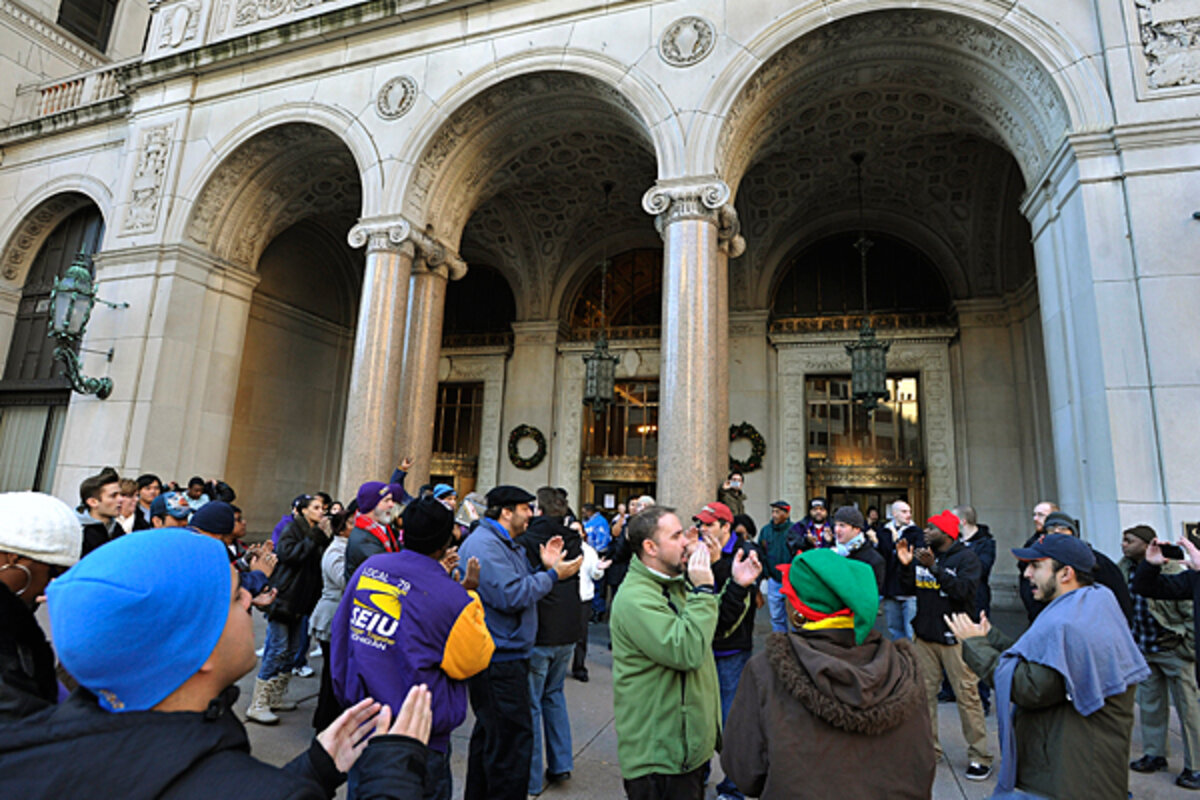Will new right-to-work laws worsen the gender pay gap in Michigan?
Loading...
The new right-to-work laws in Michigan, already one of the worst states for gender pay equity, may represent a step backward when it comes to narrowing the gender pay gap in the state, data show.
Right-to-work laws, signed by Gov. Rick Snyder on Tuesday, prohibit unions from requiring workers to pay dues, draining the funds needed for negotiating contracts and representing workers’ grievances. Right-to-work supporters say this will give workers freedom of association and promote job creation.
But critics of the legislation say that workers’ wages will drop without unions’ collective bargaining power. The law will impact all workers, the critics say, potentially reducing salaries and benefits, but it could disproportionately affect women, who already have lower annual earnings than men.
The average full-time worker in a right-to-work state makes approximately $1,500 less per year than a similar worker in a non-right-to-work state, according to a briefing paper by the Economic Policy Institute (released in February 2011). And women’s wages in right-to-work states are 4.4 percent lower than in non-right-to-work states, while men’s are only 1.7 percent lower, according to the EPI analysis.
“The policy hurts everybody, but women and minorities to a larger extent,” says Carol Rosenblatt, executive director of the Coalition of Labor Union Women.
Michigan ranks seventh lowest among states when it comes to gender pay equity: women make 74 cents for every dollar men earn, according to a recent study by the American Association of University Women (AAUW). Nationally, women make 77 cents to men’s $1. Looking at median annual salaries for full-time workers, women in Michigan made $36,931, compared with $50,053 made by men.
“Many factors go into evaluating the gender wage gap, but unions have historically played a role in raising wages and narrowing the wage gap,” says Catherine Hill, research director at AAUW. “Union occupations have an overall flatter structure of earnings for all workers.”
In 2011, Michigan had 702,619 unionized workers – the sixth largest union force in the US – of which 46.3 percent were women, according to the Center for Economic and Policy Research. The state also ranks fifth highest by percentage of unionized workers, with 19.2 percent compared with 13 percent nationally.
So, why is Michigan’s pay equity so low despite its high level of unionization?
The gender gap persists because of the occupational mix in Michigan, where men dominate a majority of high-paying industries. In the manufacturing industry, men make up 75 percent of the workers, according to the state’s 2009 strategic plan for stimulus spending. Women, on the other hand, make up 60 percent of “pink collar” jobs – education, health-care services, retail, and other social services.
Citing data from the AFL-CIO’s Department of Professional Employees, Ms. Rosenblatt says the higher wages for union versus nonunion workers is prevalent in these female-dominated professions: union preschool and kindergarten teachers make 64 percent more than those not in unions, and the difference is 32 percent for elementary school teachers, 31 percent for social workers, 28 percent for librarians, and 21 percent for registered nurses.
Nationally, women who are members of unions make 28 percent more than their nonunion counterparts, she says. For Hispanic women, the impact of unions is even greater – they make 38 percent more than nonunion workers.
Increased wages for union workers is primarily the result of the collective bargaining power of unions, which would be reduced under right-to-work laws.
“Since the pay scales in most union contracts are open information, unions and collective bargaining shed light on wage differences, and the transparency makes it harder for discrimination to thrive,” said Heidi Hartmann, president of the Institute for Women’s Policy Research (IWPR), in a statement. “Right to Work is likely to hurt women and minorities more than men and whites, because unions bring up wages the most for the disadvantaged.”
While right-to-work laws’ impact on wages may not be immediate, says Ms. Hill, over time the declining wages will impact those who are already earning less.
“Since women are already somewhat behind, putting them further back is very harmful,” Rosenblatt says. “If we are looking at how to help women out of poverty and into the middle class, then decent paying jobs with decent benefits are helpful.”





